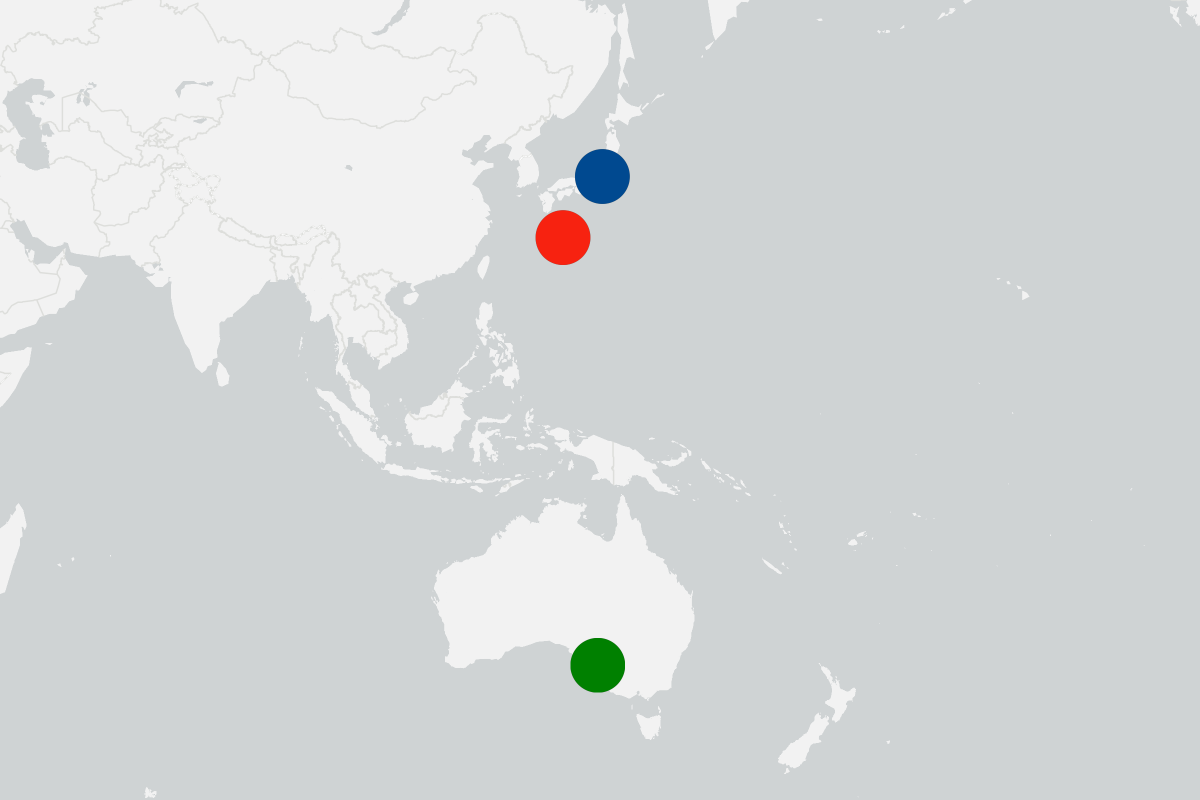
A Newsweek map tracks the deployments of three United States spy planes in the western Pacific, as the Pentagon continues to monitor its main rival, China, in the contested region.
The U.S. Pacific Air Forces (PACAF) previously told Newsweek that its fleet of spy aircraft were conducting what it called “planned, routine operations” in the Indo-Pacific region.
Newsweek has reached out to the Chinese Defense Ministry for comment via email.
Why It Matters
The U.S. Air Force operates various types of reconnaissance aircraft for different missions—such as collecting signals and detecting nuclear explosions. The American spy plane fleet is often deployed overseas to allied countries, including Japan, the U.K. and Qatar.
China, which is rapidly expanding its military, is a major spying target for the United States. Beijing has protested Washington over what it calls “close-in reconnaissance” near China’s coastline, which has occasionally led to dangerous encounters between aircraft.
What To Know
Using tracking data from Flightradar24, which displays Coordinated Universal Time (UTC), a Newsweek map shows a U.S. RC-135W Rivet Joint aircraft arrived at Royal Australian Air Force Base Edinburgh in South Australia from its home base, Offutt Air Force Base in Nebraska, on July 3.
Tech. Sgt. Chris Thornbury/U.S. Air Force
In photos released on Tuesday, the U.S. Air Force confirmed the Rivet Joint’s deployment, revealing that it was part of Exercise Talon Shield—a test of the force generation model that involves sending a unit from its home to another location to support “downrange operations.”
The Rivet Joint is capable of detecting, identifying and geolocating electromagnetic signals, providing “near real-time on-scene intelligence collection, analysis, and dissemination.”
On Monday, a U.S. RC-135S Cobra Ball aircraft—deployed at Kadena Air Base on Japan’s Okinawa Island—was tracked flying over the Philippine Sea near Japan’s southwestern islands. The Cobra Ball can collect optical and electronic data on ballistic targets.
It remains unclear whether the Cobra Ball was monitoring Chinese missile tests.
The following day, a U.S. RC-135V Rivet Joint aircraft was spotted departing from Kadena Air Base—a U.S. airpower hub in the western Pacific—and flying into the South China Sea, where China, the Philippines, and other countries have overlapping territorial claims.
Following its South China Sea mission, however, the aircraft was tracked diverting to Yokota Air Base near Tokyo for unknown reasons, after circling over Kadena Air Base, according to MeNMyRC, an open-source intelligence analyst on X (formerly Twitter).
What People Are Saying
The U.S. Pacific Air Forces previously told Newsweek: “PACAF remains committed to a free and open Indo-Pacific focused on fostering regional security and stability throughout the region.”
Mao Ning, spokesperson for China’s Foreign Ministry, said at a press conference in February 2023: “U.S. aircraft and warships frequently conduct close-in reconnaissance around China, which seriously threatens China’s national security and undermines regional peace and stability. The Chinese side has repeatedly voiced our grave concerns. The U.S. needs to put an immediate end to such provocations.”
What Happens Next
The U.S. military is expected to continue deploying spy aircraft in the western Pacific amid China’s growing military presence. It remains to be seen whether U.S. and Chinese aircraft will be involved in “unsafe and unprofessional” encounters.
